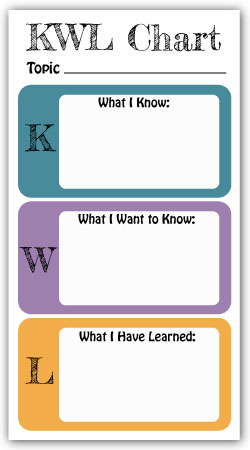The Power of Background Knowledge in the ELT Classroom

The information we know on a topic helps us understand it more. For example, if you have experience with baseball, then learning more about it will be easier. Some say that background knowledge is like Velcro: It helps information to stick on and stay. The stickier, the better. In the book The Knowledge Gap, Wexler describes background knowledge as a pillar of reading comprehension. And we agree! The Sheltered Instruction Observation Protocol model (better known as SIOP) also recognizes background knowledge as a critical component of instruction for multilingual learners.
Why Is Background Knowledge Important in English Language Teaching?
Think about when you see a movie or plan to watch one from home. Likely, you view the trailer. The trailer supplies you with background knowledge to form a foundation for your thoughts to build upon as you watch the movie.
In the classroom, this translates similarly. The experiences and opportunities students have had might be starkly different from one another. Perhaps one child will have had gaps in formal education but might have lived experiences with nature that other students haven’t had, but we might also have a student with extraordinary schooling but no lived experiences with animals or geography. It’s important to consider our students’ background knowledge of concepts before we teach those concepts—in fact, it is essential for reading comprehension.
One multilingual learner of English explained that in math class, her teacher ridiculed her for not knowing how to add American money. The student was embarrassed in front of her peers and did not respond, but thought to herself that she never learned about American money in her home country. Imagine the impact of this experience on the student.
Background knowledge is schema or prior knowledge, and it supports new learning development. When students need more background knowledge, we can help them to build it.
How Can We Help Our Students Build Background Knowledge?
 1. Brainstorm
1. Brainstorm
We can begin by investigating students' prior knowledge. Everyone has prior knowledge. Some have little, some have a lot, some have incorrect, some have advanced, and so on. A common way to access prior knowledge is by using brainstorming techniques like KWL charts or ABC brainstorming.
2. Use Other Media
We can use short videos and pictures to build students’ background on topics and concepts about which they lack background. If feasible, field trips (real or virtual field trips) are sometimes also a great way to begin to build background.
3. Read
Books are another way to build students’ background knowledge. We can read aloud or share relevant books at the appropriate levels. Making a wide variety of books on a concept available to students to read during independent reading is another option.
4. Create Categories
Through categorizing and sorting words, students connect ideas, access prior knowledge, and build background. One way we can help students do this is by providing them with a set of words related to the upcoming topic and giving them time to categorize and sort the words with peers. Incorporating images with the words is a great scaffold.
5. Make Connections
Making connections between words is also helpful. Sometimes, such connections are not obvious to students until we point them out directly or help them make the connections themselves. Here are a few ways to guide students into making these connections:
-
- Ask students to brainstorm words with a specific root, prefix, or suffix in common. For example, put the word part multi- on display for students and ask them to brainstorm all the words they know with multi- in them. As a class, create a word web or bubble map of the words that are brainstormed and analyze the meanings. They may come up with words like multimedia, multipurpose, multilingual, multimodal, and multisyllabic. Now, lead students to find the connection between these words. They will discover that multi- means many. You can find printable lists of common roots, prefixes, and suffixes here.
- Utilize analogies. This method takes a concept that is familiar and connects it with the concept that is being learned. “___is like ___” or “___is to ___ as ___is to ___.” For example: Content and language objectives are like road maps. They help students navigate toward their destination. Content and language objectives are to instruction as the address is to the GPS when traveling to a new destination.
In the End…
Background knowledge is what students need to know before they can learn new information. It is an essential part of instruction because it positions your multilingual learners of English for optimal learning. How do you build background knowledge?


